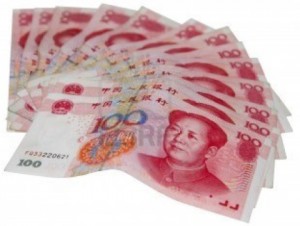Chinese Yuan Renminbi
Short facts about CNY – Chinese Yuan Renminbi
![]()
Read our in-depth guide about the Chinese currency Yuan (CNY) below:
- Common names for Yuan
- Countries with Yuan
- How much is the Yuan traded?
- History of the Chinense Yuan
- Currency symbol and ISO-code
- Currency crisis with Chinese Yuan
- Bank of China
- Online Forex Trading with Yuan
- CNY vs other currencies
- Pictures of Yuan
Common names for CNY
The Chinese yuan (plural kuai) or renminbi (RMB) meaning ‘people’s currency’. It uses the symbol ¥.
Countries with CNY
The People’s Republic of China, apart from Hong Kong or Macau. The CNY might sometimes be accepted in these two administrative regions, but they have their own currency. It is not accepted in Taiwan (which terms itself the Republic of China).
Unofficial CNY countries
Cambodia, Laos, Mongolia, Nepal and North Korea have all welcomed trade in CNY, and it is commonly used in the areas of Laos and Myanmar that border China.
How much are the CNY traded?
The CNY trades at a rate set by the People’s Bank of China within a narrow band of variation, based on its price against a basket of currencies.
Currency symbol and ISO-code
The symbol for the Chinese currency is ¥ or RMB. The ISO-code is CNY, although the code CNH is used also to designate RMB in offshore trading (ex Hong Kong).
Currency crisis with CNY
The practice of pegging the CNY to the US dollar was relaxed a little in 2005, but China made an unofficial return to it during the financial crisis in 2008, but depegged again in 2010. In 2009 the government announced an infrastructure investment program to stimulate the economy and in the next year tightened lending regulations for Chinese banks as a response to the global financial crisis.
Central Bank for CNY
The Chinese Central Bank is the People’s Bank of China. Its published policy is to promote economic growth by maintaining the stability of the CNY.
Trade CNY
The CNY did not trade much on the international markets before 2009 due to Chinese government policy. Most forms of CNY transactions were not permitted during this time, and any that were allowed had to be transacted through the People’s Bank of China.
Since 2009 international transactions can be made directly. China has also agreed terms with Japan, Russia, Thailand and Vietnam, whereby trade transactions can be settled in CNY, a departure from the previous policy which necessitated conversion into US dollars beforehand.
The CNY trades at within a narrow (0.5%) band of variation from the rate set by the People’s Bank of China, based on its price against several currencies, most chiefly the US dollar, the Euro, the yen and the South Korean won, but also to a lesser extent the currencies of the UK, Thailand, Russia, Australia, Canada and Singapore.
History of the CNY
After the Communist Party gained power in China, it started to issue its own currency to replace the varied forms of money in existence in the areas it controlled. This unified currency was first issued at the end of 1948, and thus the yuan pre-exists the establishment of the present Chinese state. By 1949 this new currency had become known as renminbi (‘the people’s currency). In an effort to combat hyperinflation, this currency was devalued in 1955 at a rate of 1 new RMB to 10,000 old RMB.
The CNY, for most of its history, has been pegged at an unrealistic level to the US dollar and other western currencies. From the 1980s onwards attempts have been made to set the currency at a more realistic rate and make it more convertible. However as China has moved from a centrally-controlled economy to a market economy the currency has been devalued to allow increased Chinese competitiveness in exports. The yuan was depegged from the US dollar in 2005, only to be pegged again unofficially for two years (2008-10) during the international financial crisis. It has been estimated that the CNY might be undervalued currently by as much as 37.5% compared to its purchasing power.
The Chinese government hopes to establish the yuan as a regional currency in South East Asia with a view to making is as strong as the yen (JPY) or the euro (EUR) and thus move towards establishing CNY as a major reserve currency in the future.
CNY vs other currencies
Most commonly CNY is traded with the US dollar, but China has also diversified its assets towards the currencies of some of its major trading partners, such as the Euro, the Yen and the Russian rouble. Other South East Asian currencies traded include the South Korean won, the Thai baht and the Singapore dollar.
Pictures of CNY notes and coins
The current issue of Chinese notes and coins is pictured below:






